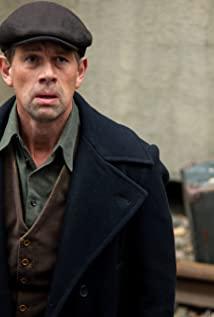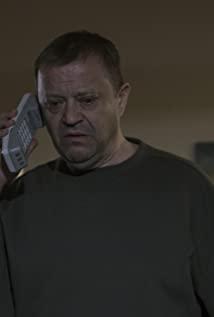There is an indisputable fact: during the three-and-a-half years of civil war in Bosnia and Herzegovina, all the Serbs, Muslims, and Croats on the warring parties have carried out large-scale organized ethnic persecution and massacres. Among the racial crimes known and confirmed by the international community, the Srebrenica massacre in March 1995 mentioned in the film was the most serious and tragic crime in post-war Europe.
If you cannot defend yourself on the battlefield, you can't be protected by bending your knees in front of the enemy.
In a war, it is not miserable, but fierce. The Serbs probably have always been well versed in the survival of strong neighbors and the weak. It has always been martial, brave and violent, and has the tradition of fighting against foreign captives and defending the land and protecting the family. Therefore, we can always strive for the initiative on the battlefield of Bosnia and Herzegovina with less Bodo. However, in the ethnic composition of Bosnia and Herzegovina, the Serbs account for only one-third, with a large area and sparse population. In the Muslim-controlled areas and the K-controlled areas, Serb civilians as ethnic minorities have also fallen victim to racial persecution and genocide. In Srebrenica, the place where the massacre occurred, during the civil war from 1992 to 1995 under Muslim control, there were also expulsions, persecutions and massacres of Serb civilians.
The distribution of the main ethnic groups in the former Yugoslavia has the characteristics of "large and small settlements". Serbia, Bosnia and Herzegovina, Croatia and other countries have a large number of different ethnic groups. At the beginning of the civil war, it had the characteristics of trans-regional, cross-border, international intervention, vertical and horizontal humiliation. Among them, the Bosnia and Herzegovina Serbs, Croatian Serbs, Serbia and the Republic once formed the same camp and the "Trinity" with ethnic lines. Therefore, they have been able to compete with Croatia and Muslims, which have long won the support of Western society. Just before the Srebrenica massacre, in May 1995, Croatian government forces assisted by the West captured the Croatian Serbian-controlled area-Western Slavonia, which was also listed as a United Nations protected area. Immediately a large number of Serb residents were driven to flee their homes. The deterioration of the Serb security situation in Croatia has triggered a new round of political and humanitarian crises in the former Yugoslavia, especially in eastern Bosnia and Herzegovina.
As a chain reaction, the Serbs in Bosnia and Herzegovina began to attack Srebrenica, a Muslim "enclave" located in the eastern Serbia-controlled zone of Bosnia and Herzegovina, in July 1995. The reason why the Serbs of Bosnia and Herzegovina dared to brazenly take action when the external situation is not conducive to their own side and the balance of power has been reversed. The reason for this is to seize the local Dutch peacekeeping force to force the United Nations to cast a rat restraint before the West uses force against the Serbs. In the end, it was resolved by force to win more bargaining chips for itself at the negotiation table in the future.
When re-examining the Srebrenica massacre, if we cannot face up to the ugly actions of the great powers intervening, adding fuel to the fire, and pulling one faction into one faction, the civil war situation will eventually fall into a protracted, intensified, and dangerously stalemate; if we cannot face the war directly All parties have taken extreme methods to carry out racial persecution and massacre of hostile nations; that will undoubtedly weaken the realistic significance and warning effect of this film.
In the protracted civil war in Bosnia and Herzegovina, ethnic cleansing and genocide used to be the source of conflicts that undermined the national unity and regional stability of the former Yugoslavia along with the resolution of force and the re-division of spheres of influence.
Here, there is no need to condemn the Dutch UN peacekeeping force stranded in Srebrenica too much. There are 2,000 Dutch peacekeepers in the UN camp. They did not take up the necessary responsibilities when the massacre occurred. Srebrenica has been under the siege of Serb forces like Sarajevo since the outbreak of the civil war in Bosnia and Herzegovina. In the end, the Muslims could not withstand the offensive of the Serbian army, and handed over their own future and destiny to the hands of the United Nations.
The Netherlands has never been a military power in modern European history. Both the First and Second World Wars declared that it remained neutral and still could not escape the catastrophe of war. At that time, the Dutch soldiers who had assumed the mission of safeguarding the safety of civilians in Srebrenica looked so vulnerable and weak in front of General Mladić, who was attacking the city and advancing bravely, and in front of the brave and combative Serb soldiers who charged forward and attacked the city? They were also imprisoned in Srebrenica, surrounded by Serbian forces. If it can be said that the Muslim soldiers who are on the warring side can choose to lay down their weapons, bow their heads and ears in front of the eye-catching Serb military police, and take the lives and property of themselves and their families to fate. So, as the front-end tool for the big powers to compete behind the scenes, the Dutch can only keep compromising and surrender.
Srebrenica was once a war zone, and the Muslims here also used to fight and fight with their Serb neighbors on the battlefield. Because of the predominance of the Muslim population here before the war, Muslim extremists also committed deportation and persecution against the local Serb minority residents. According to the information provided by the Serbs: During the entire civil war, at least 3,227 Serb residents died in the Srebrenica area, 446 people died in the city center alone, and as many as 469 Muslim mobs were involved in crimes. All of these also have various evidence materials such as text and images. Srebrenica is also full of Serb corpses and graves.
When I saw the Muslim refugees flooding the entire picture, when I saw the large numbers of young men among the women and children, when I saw many strong Muslim youths being detained by the Serb military police, I couldn’t help but ask : Why can’t Muslims raise arms to resist, and defend themselves and their families with death struggles?
Is it based on the belief that Muslims love peace and be kind to their neighbors? wrong. Prior to this, Srebrenica had always been one of the important military strongholds of the Muslims in eastern Bosnia and Herzegovina. Relying on Srebrenica, the Muslim armed forces here constantly clamp down on Serbian attacks, threaten the security of the Serbian-controlled area, and even frequently invade the main passage from the Serbian-controlled area of Bosnia and Herzegovina to the Republic of Serbia.
The United Nations Srebrenica Reserve appeared in April 1993, when the Serbian army launched an offensive aimed at attacking Ksrebrenica. Under the military pressure of the Serbs, the local Muslim defenders finally agreed to disarm after the mediation of the United Nations and promised not to harass Serb civilians. On April 16, 1993, the Security Council passed a resolution specifying Srebrenica as a United Nations protected area.
That is to say, the local Muslim soldiers were unable to withstand the fierce attack of the Serbian army at first, so they took the initiative to lay down their weapons and strayed among the local civilians to seek the asylum of the international community. Once the Serbs break the contract and regain control of Srebrenica, it is bound to conduct a new round of screening and liquidation of the Muslims who were once rivals on the battlefield. In order to avoid them once they return to the Muslim-controlled area and rejoin the Muslim armed forces to continue to be an enemy of the Serbs.
I don’t know how many of the victims of the massacre were soldiers who laid down their weapons, or whether anyone among them had participated in the persecution of local Serb civilians.
What is staged in the civil war has always been scenes of fighting in the same room and turning violence into violence.
Therefore, in the end, the film will leave the audience with an open end: the former executioner and the former victim will gather together, and in the future Srebrenica, children of different nationalities may abandon their hatred and heal the wounds of civil war.
War will leave people with nothing, and it also teaches people to hate or embrace your enemies.
I believe that the executioners in the Holocaust most hope to see that the survivors will stay on the ruins to start a new round of killing and live in hatred until they die. In this way, the latecomers will continue to praise their killings and praise their achievements.
Suffering will sprout from hatred. Only reconciliation will awaken hope and new life.
During World War II, serious ethnic cleansing and genocide occurred in the former Yugoslavia. In the process of post-war reconstruction, the wounds of the war were healed again, and there was a situation of national unity and harmonious coexistence.
I hope that the bitter fruits of the Srebrenica massacre can wipe out the ugliness of civil war and the greed of human nature. I hope that the children of the Muslims, Serbs, and Croats will have the opportunity to gather together, sing and dance, to offer sacrifices to the dead and comfort the living.
There will be that day.
View more about Quo Vadis, Aida? reviews











